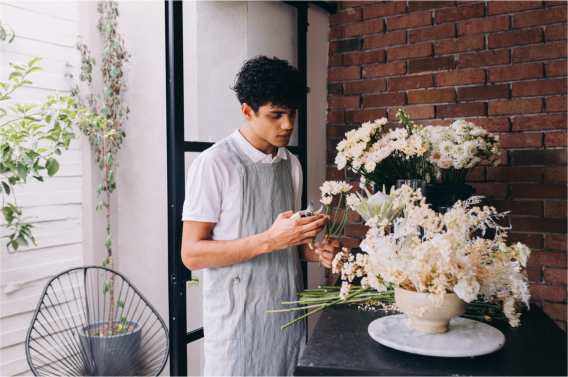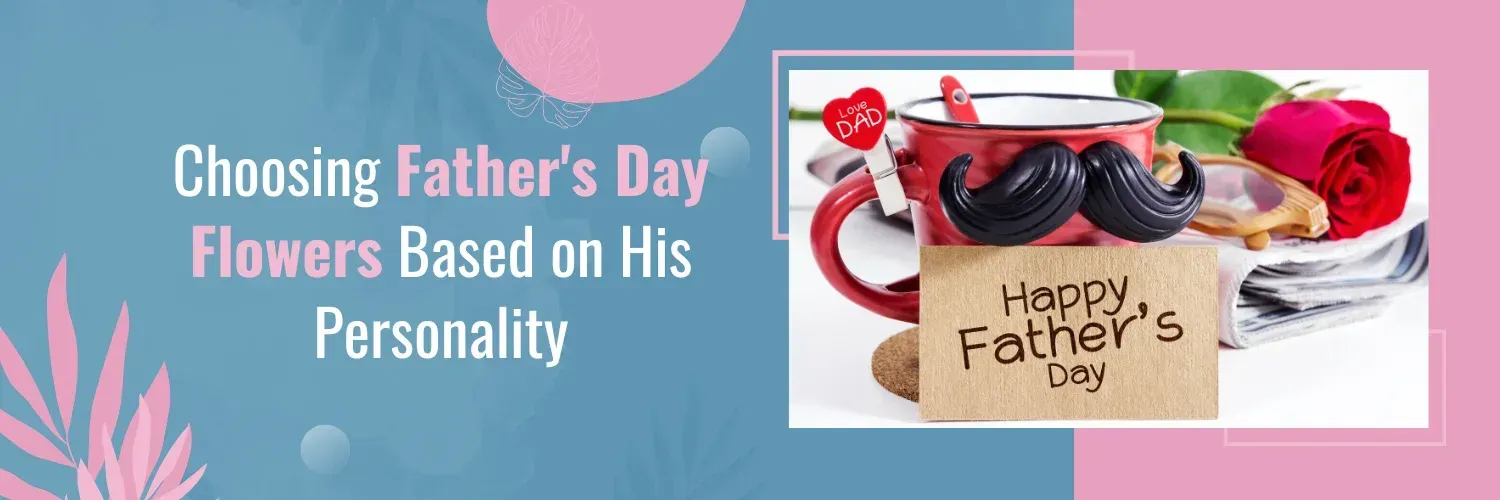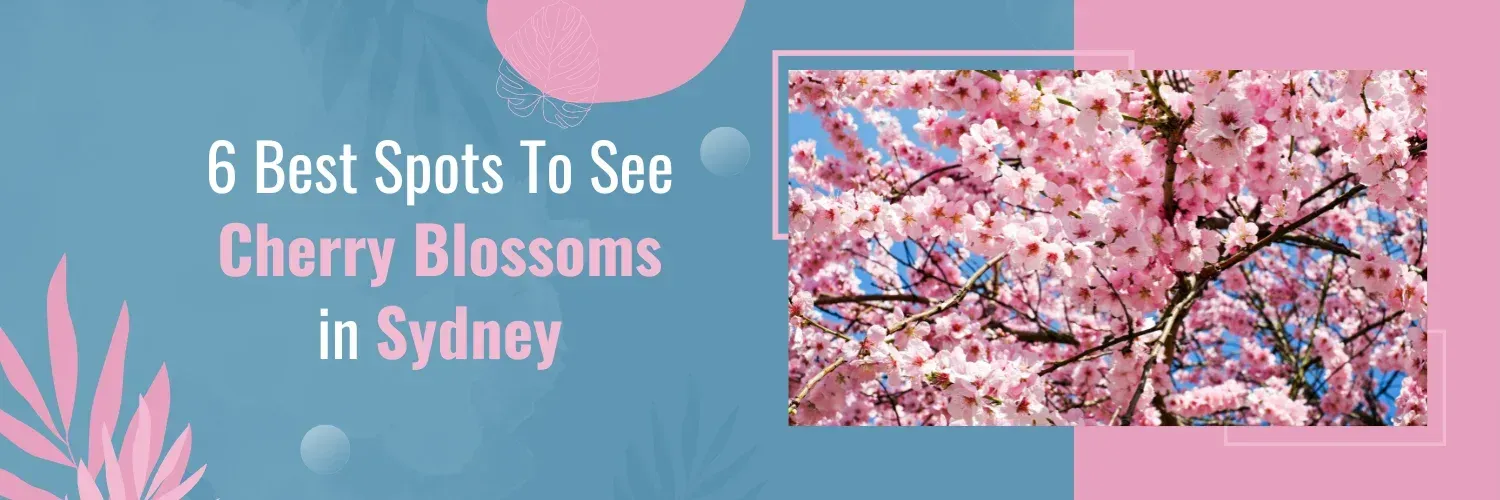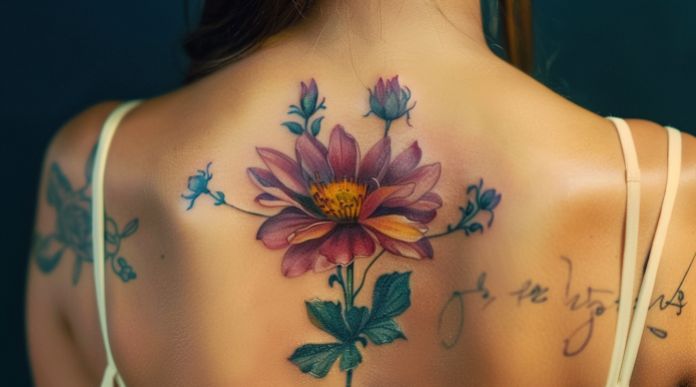Knowing About Flower Arrangements

Flower arrangements are more than just decorative elements; they can transform a space, evoke emotions, and convey special messages. Even if you’re not a professional florist, with the right guidance, you can create stunning arrangements that rival those made by experts. This blog is your guide to avoiding common flower arrangement mistakes and achieving professional-looking results. Drawing insights from experienced florists, we’ll provide you with a comprehensive set of tips and techniques to elevate your floral arranging skills.
Choosing the Right Flowers
Selecting the appropriate flowers is a pivotal step in creating a successful flower arrangement. Flowers have the power to convey emotions, set the tone, and tell a story. Whether you’re crafting an arrangement for a special occasion or simply aiming to brighten up your living space, understanding the principles behind choosing the right flowers can greatly enhance your arrangement’s impact.
Understanding the Occasion
The occasion or event for which you’re creating the flower arrangement should heavily influence your choice of flowers. Different occasions evoke different sentiments, and your arrangement should align with the mood and theme of the event. For instance:
- Weddings: Weddings often call for romantic and elegant flower choices, such as roses, peonies, and orchids. Soft and pastel color palettes are frequently preferred.
- Birthdays: Birthdays are the perfect opportunity to play with vibrant and cheerful blooms. Sunflowers, daisies, and tulips can add a sense of joy and celebration to the arrangement.
- Anniversaries: Anniversaries may warrant classic and sophisticated flowers like calla lilies or ranunculus. Choose flowers that symbolize lasting love and appreciation.
- Formal Events: Formal events, such as galas or corporate gatherings, usually demand more structured and refined arrangements. Orchids, hydrangeas, and lilies are excellent choices for creating an upscale look.
- Casual Gatherings: Casual settings, like garden parties or brunches, provide room for creativity. Wildflowers, daffodils, and daisies can contribute to a laid-back and welcoming atmosphere.
Considering Color Schemes
Colour is a powerful tool in flower arrangements, as it sets the mood and can evoke specific emotions. When choosing flowers, consider the colour scheme that best complements the occasion and the space where the arrangement will be displayed.
- Coordinating Colors: Coordinating colours create a harmonious and balanced look. You can choose flowers that belong to the same colour family or share similar undertones. This approach lends a sense of unity to the arrangement.
- Complementary Colors: Using complementary colours creates contrast and visual interest. Complementary colours are opposite each other on the colour wheel, such as purple and yellow or red and green. This approach can make certain elements stand out.
- Monochromatic Scheme: A monochromatic scheme involves using variations of a single colour. This can create an elegant and sophisticated appearance, with different shades and tints adding depth.
- Analogous Colors: Analogous colours are next to each other on the colour wheel and offer a pleasing and calming effect. For instance, arranging flowers in shades of pink, red, and orange can create a warm and inviting atmosphere.
Seasonal Availability
Opting for flowers that are in season offers several advantages. Seasonal blooms are typically more affordable and readily available, making them a practical choice. They also resonate with the time of year, adding a natural touch to your arrangement. Research local gardening calendars or consult with florists to determine which flowers are in season during your desired time frame.
However, if your heart is set on a flower that’s out of season, don’t worry. Many florists offer a wide range of options, including imported flowers. Alternatively, you can opt for flowers that capture a similar look or feeling. The goal is to create an arrangement that feels harmonious and thoughtfully designed, regardless of the flower’s availability.
By carefully selecting flowers that align with the occasion, colour scheme, and seasonal context, you can lay a strong foundation for a breathtaking flower arrangement. Remember that the right combination of flowers can elevate the arrangement from ordinary to extraordinary, leaving a lasting impression on those who admire your creation.
Essential Tools and Preparation
Creating a stunning flower arrangement goes beyond selecting the right flowers; it also involves using the proper tools and preparing both the flowers and the materials for arranging. Equipping yourself with the right tools and ensuring that your flowers are well-prepared can make the arranging process smoother and result in a more professional-looking outcome.
Selecting the Appropriate Vase or Container
The choice of vase or container significantly impacts the overall aesthetics of your flower arrangement. The container’s style, shape, and size should complement the chosen flowers and enhance the arrangement’s visual appeal.
- Style: Match the container’s style with the arrangement’s theme. A sleek and modern vase suits contemporary arrangements, while a vintage-style container complements a more traditional bouquet.
- Shape: Consider the shape of the container and the flowers. A tall, cylindrical vase is ideal for long-stemmed flowers like roses or lilies, while a wide, shallow bowl suits a lush arrangement of shorter blooms.
- Size: The size of the container should be proportional to the amount of flowers you have. Avoid overcrowding or leaving too much empty space. A general guideline is to choose a container that is one-third the height of the stems.
Properly Preparing Flowers
Before arranging, ensure your flowers are well-prepared to maximize their freshness and longevity.
- Removing Leaves and Thorns: Trim any leaves that would be submerged in water. Leaves in the water can promote bacterial growth and reduce the arrangement’s lifespan. Remove thorns if working with roses or other thorny stems.
- Cutting Stems at an Angle: Trim the stems at a 45-degree angle. This creates a larger surface area for water absorption, allowing the flowers to stay hydrated.
- Hydration Time: Place the trimmed flowers in water for several hours or overnight before arranging. This allows the stems to drink up water, rejuvenating the flowers and preventing premature wilting.
Gathering Necessary Tools
Having the right tools on hand ensures that your arrangement process is efficient and effective.
- Floral Shears: Sharp and precise floral shears make clean cuts, reducing damage to stems and ensuring proper water uptake.
- Florist’s Tape: Florist’s tape is useful for creating a grid or lattice pattern across the vase’s opening, which helps hold the stems in place and maintain their arrangement.
- Floral Foam: Floral foam provides stability to your arrangement. It can be soaked in water and placed in the container to anchor the stems securely.
- Water Tubes: For delicate flowers or those prone to wilting, water tubes can be attached to stems to provide extra hydration.
- Wire and Floral Picks: These tools are handy for reinforcing delicate stems, creating structured designs, or adding small accents to the arrangement.
Each tool serves a specific purpose in the arrangement process, contributing to the overall design and ensuring the longevity of the flowers.
Preparing the right tools and your chosen flowers is the foundation of a successful flower arrangement. By investing time in selecting the appropriate container, properly prepping your flowers, and gathering the necessary tools, you set yourself up for a smoother arranging process and a more visually pleasing result. With these elements in place, you’re ready to embark on the creative journey of bringing your flower arrangement to life.
Design and Composition
The art of flower arrangement goes beyond simply placing flowers in a vase. Understanding design principles and mastering composition techniques can transform your collection of flowers into a visually stunning and harmonious arrangement that captivates the eyes and hearts of those who behold it.
Creating a Focal Point
Every well-designed flower arrangement should have a focal point that immediately draws the viewer’s attention. This focal point acts as the centrepiece of the arrangement, capturing the essence of your design.
- Choosing a Standout Flower or Element: Select a flower with unique characteristics or a striking colour as your focal point. Alternatively, you can use an interesting element like a decorative branch, a piece of driftwood, or a miniature sculpture.
- Placing for Maximum Visual Impact: Position the focal point slightly off-centre, following the rule of thirds. This placement creates a more dynamic and visually pleasing arrangement. Ensure the focal flower or element is at a height that makes it easily noticeable.
Achieving Balance and Proportion
Balance and proportion are essential to creating a visually appealing arrangement that feels harmonious.
- Explaining Visual Weight: Visual weight refers to how elements in your arrangement visually balance each other. Larger, heavier, or darker elements carry more visual weight than smaller, lighter, or brighter ones.
- Tips for Arranging Different Sizes: Achieve balance by distributing visual weight evenly. For instance, if you have a large flower on one side, balance it with a group of smaller flowers on the opposite side.
- Creating Visual Harmony: Proportion involves the relationship between the size of the flowers, the container, and the surrounding space. Aim for a balanced ratio that doesn’t overwhelm the container or leave it looking empty.
Adding Greenery and Fillers
Incorporating greenery and filler flowers is like adding layers and texture to your arrangement, enhancing its depth and visual interest.
- How Foliage Enhances: Greenery acts as a backdrop that accentuates the beauty of the focal flowers. It provides contrast, adds volume, and contributes to a lush appearance.
- Mixing Textures and Shapes: Use different types of foliage to introduce varying shapes and textures. Combining broad leaves with delicate ferns or spikey grasses can create an exciting visual contrast.
- Balancing the Composition: Intersperse filler flowers like baby’s breath or wax flowers to fill gaps and soften the edges of the arrangement. These fillers contribute to a balanced and full composition.
By thoughtfully incorporating these design and composition principles, you can elevate your flower arrangement from being just a collection of blooms to a captivating work of art. Remember that each element in the arrangement plays a role in the overall harmony, and your careful consideration of these aspects will be evident in the final result.
The Arrangement Process
Turning your chosen flowers into a beautifully arranged bouquet involves a systematic process that requires attention to detail, creativity, and a touch of artistic flair. By following a step-by-step guide and understanding how to work with different types of flowers, you can create an arrangement that’s not only visually appealing but also long-lasting.
Step-by-Step Guide
- Inserting Floral Foam: Begin by inserting floral foam into the container. The foam provides stability to the arrangement and helps hold the stems securely in place. Make sure the foam is soaked in water beforehand to ensure proper hydration for the flowers.
- Placing Larger Flowers: Start with the largest flowers or focal points. These flowers form the structure of the arrangement. Position them strategically to establish the arrangement’s height, width, and overall shape.
- Adding Focal Flowers: Next, add the focal flowers that draw attention and contribute to the arrangement’s theme. Place them slightly lower than the larger flowers to create depth.
- Incorporating Filler Flowers and Greenery: Integrate filler flowers and greenery to fill gaps and add texture. Begin with larger filler flowers and then layer in smaller ones for a balanced and lush look. Insert greenery strategically to enhance the arrangement’s visual appeal.
- Checking for Balance: Step back and assess the arrangement for balance, proportion, and overall visual appeal. Make adjustments as needed. Pay attention to the arrangement’s height, ensuring that it’s well-balanced from all angles.
What are Some Common Mistakes People Make When Arranging Flowers?
Arranging flowers might seem straightforward, but there are certain nuances to keep in mind to create beautiful, lasting arrangements. Here are some common mistakes people make when arranging flowers :
- Not Conditioning the Flowers: Before arranging, it’s essential to condition your flowers by giving them a fresh cut at an angle and allowing them to hydrate in water for a few hours. This helps them last longer in the arrangement.
- Using a Dirty Vase: Any bacteria in the vase can cause the flowers to wilt quickly. Always clean the vase thoroughly before adding water and flowers.
- Overcrowding the Vase: While it might be tempting to use all the flowers you have, overcrowding can cause flowers to wilt faster due to reduced air circulation. It can also make the arrangement look cluttered.
- Ignoring Flower Proportions: The size of the vase and the length of the flower stems should be in proportion. A common guideline is for the flowers to be one and a half to two times the height of the vase.
- Forgetting About Balance: An arrangement that’s too heavy on one side can look lopsided. Aim for visual balance, both in colour and volume.
- Not Using Flower Preservative: Many flowers benefit from floral preservatives, which provide nutrients and keep bacteria at bay. This can extend the life of the arrangement.
- Not Considering Flower Lifespan: Some flowers naturally last longer than others. If mixed in the same arrangement, short-lived flowers will wilt and decay, potentially affecting the longevity of the other flowers.
- Not Refreshing the Water: Water can become cloudy and filled with bacteria that can shorten the life of your flowers. Changing the water every couple of days, or at least when it starts to get cloudy, can help prolong flower freshness.
- Ignoring Texture and Foliage: Using only flowers and ignoring greenery can result in a lack of depth and texture. Foliage can enhance the overall look and feel of the arrangement.
- Forgetting About Color Harmony: While contrasting colours can be striking, it’s also important to ensure there’s a harmonious colour palette.
- Using All Flowers at the Same Height: Creating different heights and layers adds depth and interest to the arrangement.
- Cutting Stems Too Short: It’s easier to cut more off a stem than it is to add length. Start longer than you think you’ll need and adjust from there.
- Not Maintaining the Arrangement: Flowers will last longer if they’re kept out of direct sunlight and away from sources of heat. Additionally, removing wilted flowers and leaves can prevent them from affecting the rest of the arrangement.
- Not Experimenting: While there are guidelines and principles in floral design, don’t be afraid to experiment and find what you personally find aesthetically pleasing.
Remember, the joy of flower arranging lies in the process as much as the outcome. By avoiding these common mistakes, you can create arrangements that are both beautiful and long-lasting.
How can I ensure my flower arrangements last longer and look their best?
Ensuring that your flower arrangements last longer and look their best requires both preparation and ongoing care. Here are some steps and tips to help you achieve this:
1. Preparation
- Choose Fresh Flowers: When buying or picking flowers, look for buds that are just beginning to open and feel firm to the touch. The fresher the flowers, the longer they will last.
- Condition the Flowers: Once you’ve chosen your flowers, condition them by giving them a fresh cut under running water or in a basin of water to prevent air from entering the stems. Cut at a 45-degree angle to increase the surface area for water uptake.
- Remove Lower Leaves: Strip off any leaves that will be submerged in water, as they can decay and promote bacterial growth.
2. Arrangement
- Use a Clean Vase: Always use a clean vase to prevent bacterial growth. Rinse it with a mixture of water and a few drops of bleach or use a special floral cleaner.
- Use Flower Food: Most florists provide sachets of flower food with their bouquets. These provide nutrients that the flowers need and often contain a bactericide to keep the water clean.
- Consider the Water Temperature: Most flowers prefer lukewarm water. Certain flowers like tulips prefer cold water.
- Avoid Direct Sunlight and Heat: While flowers need light, direct sunlight can cause them to wilt quickly. Place arrangements away from direct sunlight, radiators, heaters, and appliances that generate heat.
- Avoid Fruit: Some fruits, like apples and bananas, release ethylene gas, which can cause flowers to wilt prematurely.
3. Ongoing Care
- Change the Water Regularly: Replace the water every couple of days, or when it begins to look cloudy. When changing the water, clean the vase to remove any bacteria.
- Re-cut the Stems: Every few days, remove the flowers from the vase and re-cut the stems at a 45-degree angle. This can help the stems take up more water and prolong the flowers’ lifespan.
- Check for Dead or Wilting Flowers: Remove any flowers that are starting to wilt or decay to prevent them from affecting the others.
- Mist the Flowers: Some flowers benefit from a light misting. This can help boost the humidity around the flowers, especially in dry environments.
- Rotate the Arrangement: If your arrangement is against a wall, rotate it every day or so to ensure all flowers get an even amount of light.
- Keep Away from Drafts: A draft can cause flowers to dehydrate quickly, so it’s best to place them in a location without strong drafts.
- Monitor Room Temperature: Flowers tend to last longer in cooler conditions. If possible, consider moving the arrangement to a cooler room at night.
4. Choose Long-Lasting Varieties
Some flowers naturally have a longer vase life than others. Examples include alstroemerias, carnations, and chrysanthemums. Incorporating such flowers can help extend the overall lifespan of your arrangement.
Remember, even with the best care, all flowers have a finite vase life. However, by following the above tips, you can ensure that your arrangements remain vibrant and fresh-looking for as long as possible.
Working with Different Flower Types
Each type of flower has unique characteristics and needs. Understanding how to handle different flowers ensures that your arrangement remains fresh and visually appealing.
- Delicate Flowers: Handle delicate flowers like orchids, tulips, or daisies with care. Avoid excessive handling that could damage their petals. Use water tubes to keep their stems hydrated and prevent wilting.
- Hardy Flowers: Sturdier flowers like roses, lilies, and sunflowers can withstand more handling. However, ensure you cut their stems at an angle and place them in water immediately to maintain their freshness.
- Preventing Drooping: Heavy-headed flowers like peonies can droop if not supported. To prevent this, insert floral wire through the stem and bend it to create a supportive loop. This technique keeps heavy flowers upright.
- Mixed Flower Types: When combining different flower types in an arrangement, consider their individual needs. For instance, arrange delicate flowers first, then add sturdier ones to avoid damaging the more fragile blooms.
With these steps and flower-specific tips in mind, you can create an arrangement that’s not only visually stunning but also well-structured and enduring. Remember that practice and experimentation are key to mastering the arrangement process, and each arrangement you create is a chance to refine your skills and create something truly special.
Common Mistakes to Avoid
Even with the best intentions, certain mistakes can compromise the beauty and impact of your flower arrangement. Being aware of these common pitfalls and taking proactive steps to avoid them will help you create arrangements that are visually appealing, balanced, and professional-looking.

Overcrowding the Arrangement
One of the most prevalent mistakes is overcrowding the arrangement. While it’s natural to want to include as many flowers as possible, too many blooms can lead to a cluttered and chaotic appearance.
- Importance of Space: Flowers need breathing room to be appreciated individually. Avoid placing them too close together, which can make it difficult to distinguish one flower from another.
- Creating Visual Balance: Leaving enough space between flowers allows each bloom to shine and contributes to a visually balanced composition.
Neglecting Proportion
Proportion plays a significant role in the overall aesthetics of your arrangement. Neglecting proportion can result in an arrangement that looks awkward or unbalanced.
- Improper Container Size: Using a container that is too small or too large in relation to the number of flowers can throw off the arrangement’s proportions.
- Unbalanced Visual Weight: Failing to distribute visual weight evenly can lead to an arrangement that feels lopsided. Balance heavier and larger flowers with lighter and smaller ones.
Using Too Many Colors
While variety is appealing, using too many colours in an arrangement can create visual confusion and diminish the overall impact.
- Chaos in Color Palette: Including numerous colours without a coherent colour scheme can lead to a chaotic and overwhelming arrangement.
- Strategies for Color Harmony: Opt for a colour scheme that includes a limited number of complementary or analogous colours. This creates a harmonious and sophisticated appearance.
Neglecting Negative Space
Negative space, the empty space around and between flowers, is as important as the flowers themselves. Neglecting negative space can make the arrangement feel cramped and disorganized.
- Importance of Breathing Room: Negative space gives your arrangement room to “breathe,” allowing each element to be showcased effectively.
- Enhancing Visual Appeal: A balanced distribution of negative space contributes to a clean and elegant arrangement, making it more visually appealing.
Forgetting About Structural Stability
A well-structured arrangement lasts longer and maintains its visual appeal. Neglecting structural stability can lead to drooping flowers or an arrangement that collapses over time.
- Using Insufficient Floral Foam: If using floral foam, make sure it’s soaked properly and secure the stems firmly to maintain stability.
- Support for Heavy Flowers: Large or heavy flowers require proper support. Use wire or water tubes to prevent drooping and maintain the desired shape.
By avoiding these common mistakes and applying the principles of a balanced composition, proportion, and colour harmony, you can create flower arrangements that showcase your creativity and attention to detail. Remember that practice and observation are key to refining your skills and creating arrangements that truly shine.
Conclusion
Incorporating the beauty of flowers into your living space or special occasions brings an unparalleled sense of joy and elegance. By steering clear of the common mistakes that often plague flower arrangements and by embracing the insights provided by experienced florists, you’re well on your way to transforming your creations from ordinary to extraordinary. Keep in mind that the journey towards mastery is paved with practice and experimentation, each arrangement a chance to enhance your skills. So, with dedication and a touch of creativity, embark on this floral adventure and relish in the satisfaction of crafting captivating and inspiring displays.
Looking to take your flower arrangements to the next level without the hassle of gathering the blooms yourself? Consider indulging in the convenience and expertise of Bourkes Florist. With their impeccable selection of flowers and a knack for exquisite arrangements, they can deliver the perfect bouquet right to your doorstep. Let your floral dreams come to life with Bourkes Florist — order now to witness the magic firsthand.
FAQs
Q: Can I use non-seasonal flowers for an arrangement?
Yes, you can, but be mindful of alternatives to capture a similar aesthetic and feel if the desired flowers are out of season.
Q: How can I make my arrangement last longer?
Change the water regularly to prevent bacterial growth, trim stems at an angle to ensure proper water absorption, and place the arrangement in a cool spot away from direct sunlight or heat sources.
Q: What if I don’t have floral foam for the arrangement?
If you lack floral foam, you can create a grid of clear tape across the opening of the container to support the arrangement’s structure and hold the stems in place.
Q: Should all the flowers be at the same height in the arrangement?
No, varying the heights of flowers adds depth and visual interest to the arrangement. Use different stem lengths to create a dynamic and balanced composition.



























